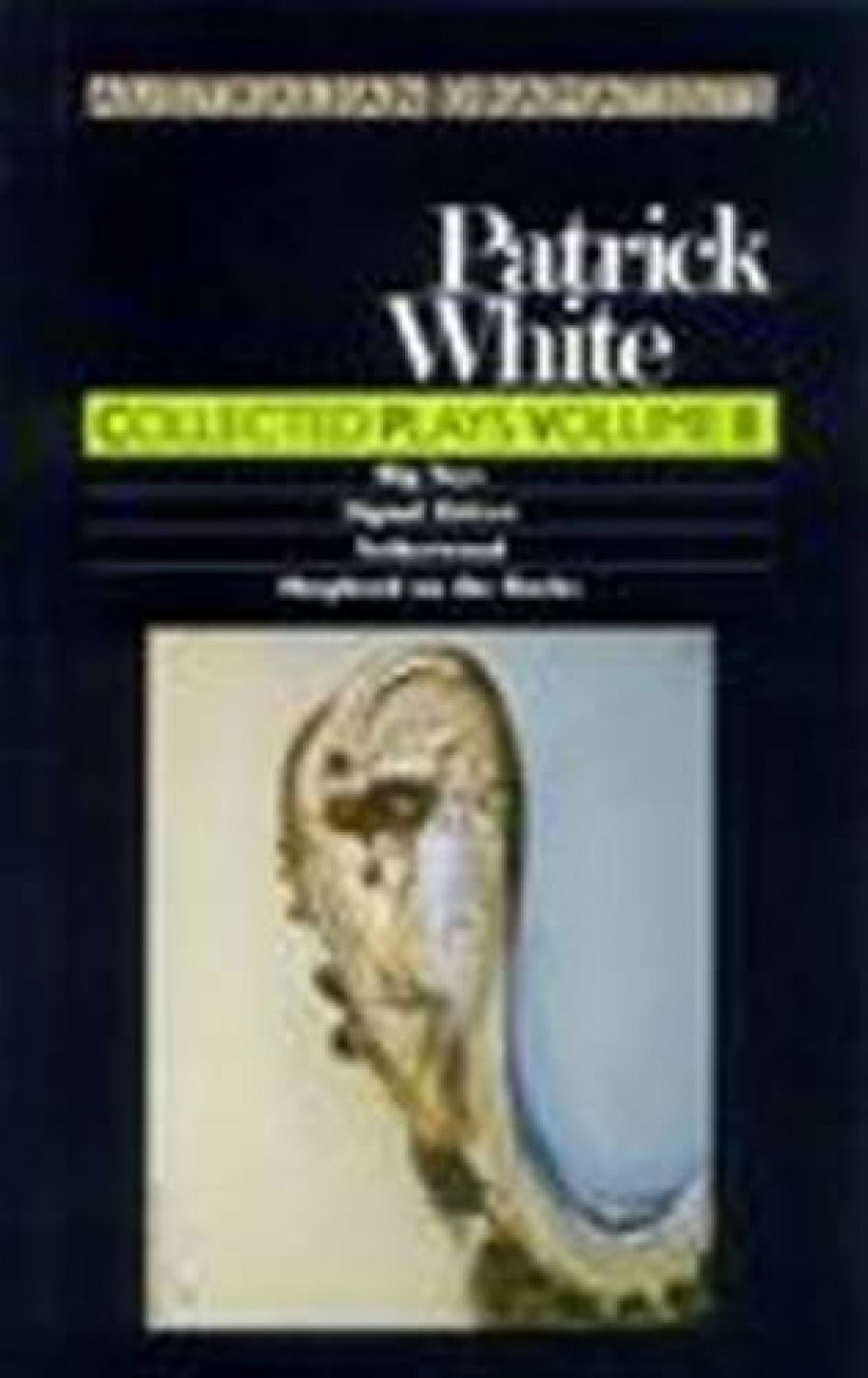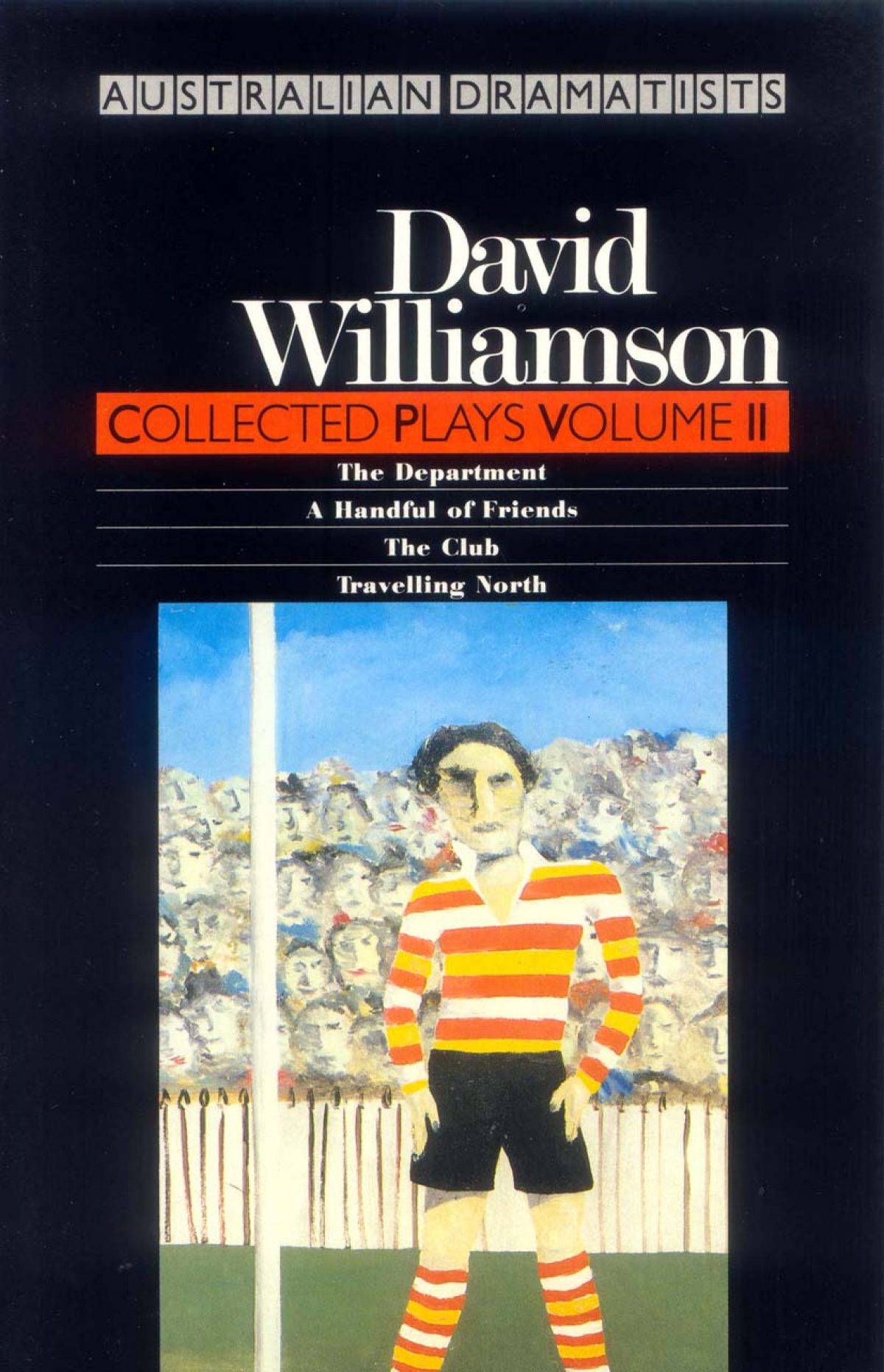
- Free Article: No
- Contents Category: Theatre
- Review Article: Yes
- Online Only: No
- Custom Highlight Text:
In a recent interview on ABC radio, the playwright, Stephen Sewell, deplored the lack of revivals of notable Australian plays. Now and then, one of the pioneer playwrights from the first half of the century is honoured briefly in this way, but it is much rarer to find one of the professional companies revisiting the major works of the last twenty-five years. As Sewell implied, this reflects the lack of a strong sense of a tradition of ‘modem classics’ in our theatre.
- Book 1 Title: Collected Plays, Volume II
- Book 1 Biblio: Currency Press, 0-86819-305-4
- Book 2 Title: Collected Plays, Volume II
- Book 2 Biblio: Currency Press, 0-86819-287-2
- Book 2 Cover Small (400 x 600):

- Book 2 Cover (800 x 1200):

- Book 2 Cover Path (no longer required): images/1_SocialMedia/2021/Mar_2021/9780868192871-4-1200x1863.jpg
Currency are doing their bit to blaze a trail in this respect as well. Their series of ‘Collected Plays’, which the publication of the second Patrick White and David Williamson collections brings to six volumes, clearly proceeds from that sense of a substantial tradition of recent Australian drama which Sewell called for. It also offers an occasion for some reworking of previously published scripts. In the present Williamson volume, for example, that shrewd and mordant comedy of the dinner-party circuit, A Handful of Friends, has undergone some substantial revision which might well encourage its long-overdue revival.
The appearance of the second volumes of the White and Williamson collections also offers an implicit invitation for another kind of revision – the critical revaluation which benefits from hindsight and a change in cultural context, and from the opportunities to find shape and coherence in the career of a particular playwright. In the case of Williamson, the four plays reprinted here are the second phase of a presumably quite long process; nine of his plays have now been republished in this form, and another eight (so far) await that attention. The second volume of White is the last. His career in writing for the theatre falls neatly into two periods, each conveniently involving four plays, which are separated by thirteen years.
In White’s case, the reappearance of his later plays confirms the general sense of what a strange, flawed, obsessive, and interesting playwright he was. The most striking impression, apart from the characteristic moral stringency, is of the diversity of dramatic means. Netherwood and Shepherd on the Rocks, which have both had very limited exposure even at the first-production stage (neither having been performed in Melbourne, and the latter play having appeared only in Adelaide), are large-scale, extravagant works, reflecting the self-conscious theatricality of the early White.
Shepherd on the Rocks in fact feels a little like a celebration of things past, as it recalls in its rumbustiousness the style of cartoon-biography of late-1960s plays such as Oakley’s The Feet of Daniel Mannix and Boddy and Eilis’s The Legend of King O’Malley. Its linkage of spirituality and show business takes it into more challenging areas than that, however, and its relatively routine satire on the church turns into a grand affirmation of carnality which is quite startling in a writer who has always been so intensely ambivalent about matters of the flesh.
Big Toys, a single-set three-hander, and Signal Driver, an urban dream play for four actors, have been much more appealing to mainstream companies because of their economies of scale. Big Toys has even had a recent revival at Melbourne’s Malthouse. The sense that there is a pressing moral purpose still gives the play some bite, though all teat hedonist 1970s glitter looks a little forced and faded now. On the whole, it is the bigger, unwanted later plays that offer the most compelling claims for a contemporary production.
The second volume of Williamson’s work gathers together four plays that also reflect diversity, but it is much more a matter of the angle of thematic attention than a variety of theatrical approaches. The anthology offers a representative range of subject areas. The arena of male institutional politics, which has always been dealt with most easily and impressively by the playwright, is visited in two precociously well-crafted comedies, The Department and The Club; in retrospect, The Club stands up particularly well, as a version of the Jonsonian comedy of moral reprisal.
A Handful of Friends deals with the marital politics of the educated middle-class, which came to be defined as characteristic Williamson territory. Travelling North represents a third species of comedy, that of compassionate reconciliation to universal cruelties and unfairness. With its very assured treatment of the symbolic associations of north and south in Australian culture, this still feels like one of his finest plays, and one of those scripts that can comfortably survive being fixed in a film adaptation and still keep its place in a national repertoire.
They offer a striking contrast, these two very influential figures in our literary and theatrical culture. They differ in their understandings of what the best kind of theatre can or should do, and in their implied relationship with the middle-class subscription audiences that went to these plays. Satire for White is a weapon, and the fact that in this theatrical context it will probably prove politically ineffectual is simply a reason to make it sharper and more outrageous. For Williamson it mostly exposes foolishness in order to mythologise it.
They offer a fundamental contrast, therefore, in their attitude to the local culture. But the sources of the difference are much more than divergent ideologies or theatrical strategies. They go to the very heart of the ways in which these two writers morally view the world. Both of them deal with the petty compromises and deceptions that characterise ‘civilised’ life.
For Williamson, though, there are few absolutes. His later work has come increasingly to focus on personal betrayal, in increasingly lurid forms. But the dominant impulse remains that of forgiveness, which frees him to indulge his fascination with the games that people play. For White there is much that is unforgivable, and quite a lot to hate; the one thing that reflects unequivocal love in these plays is the joy and the mischief in making theatre itself.
The photographs of the playwrights on the back cover of each volume almost caricatures that contrast. There is David Williamson, his level gaze looking straight at and into you, but the mouth offering an agreeable if reserved social complicity. There is Patrick White, mouth and neck drawn into an apparently intolerable tension, bridling indignantly at something above you and to the side, a man quivering with the capacity to take offence.
We don’t, fortunately, have to choose between them, though most audiences will, and quite decisively. We do need them both, the presiding genius of our mainstream theatre and the playwright who remains leader of the opposition after his death. Currency does us another favour in reframing for the present a lively antithesis from our recent theatrical past.


Comments powered by CComment